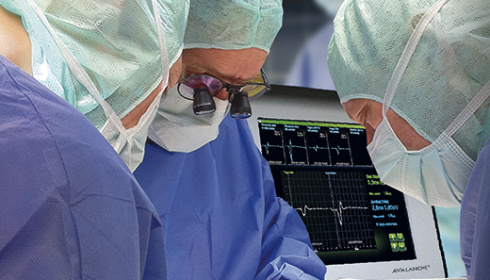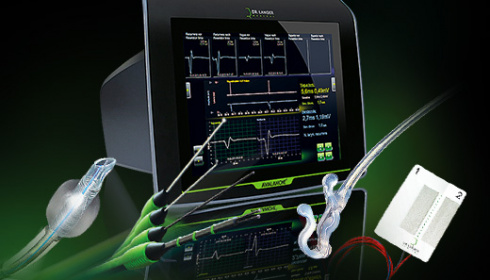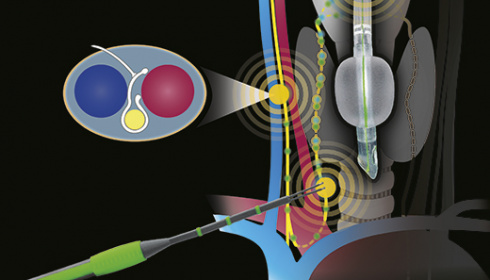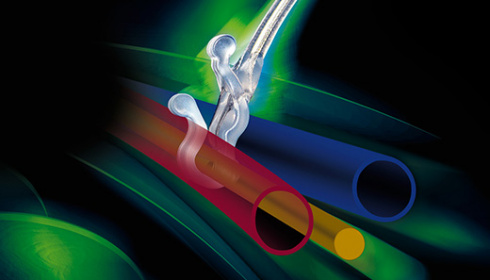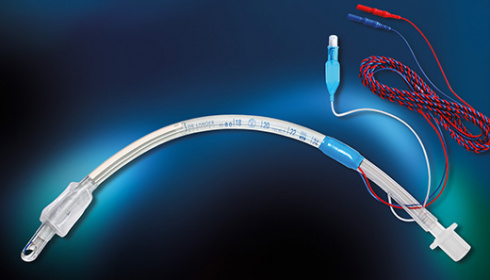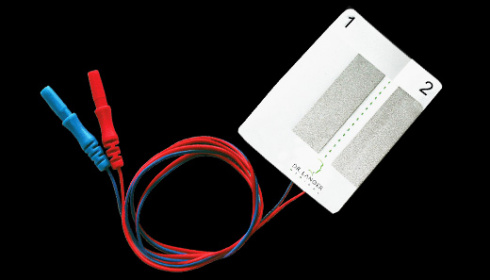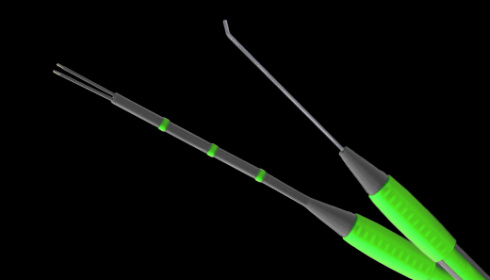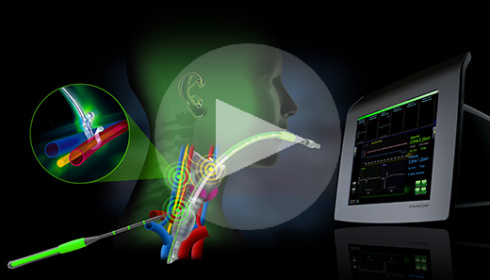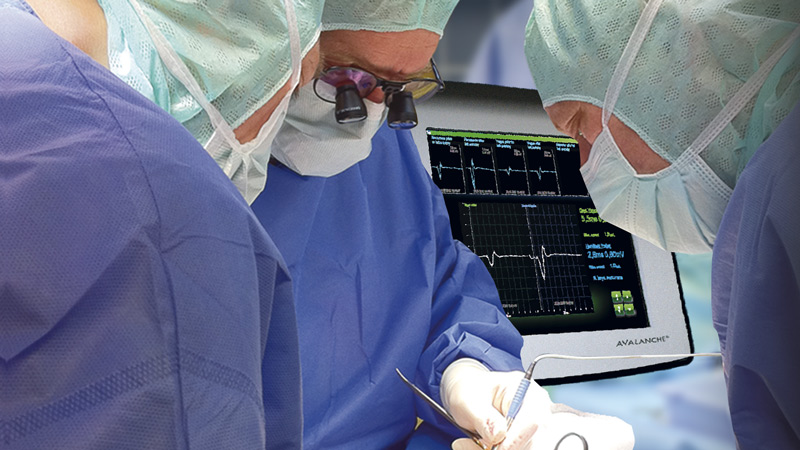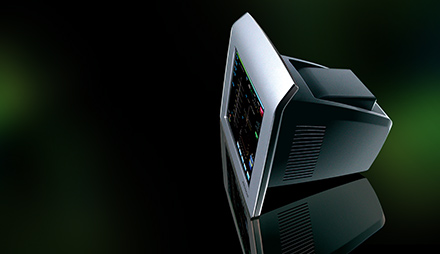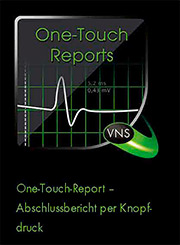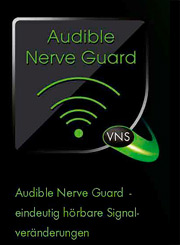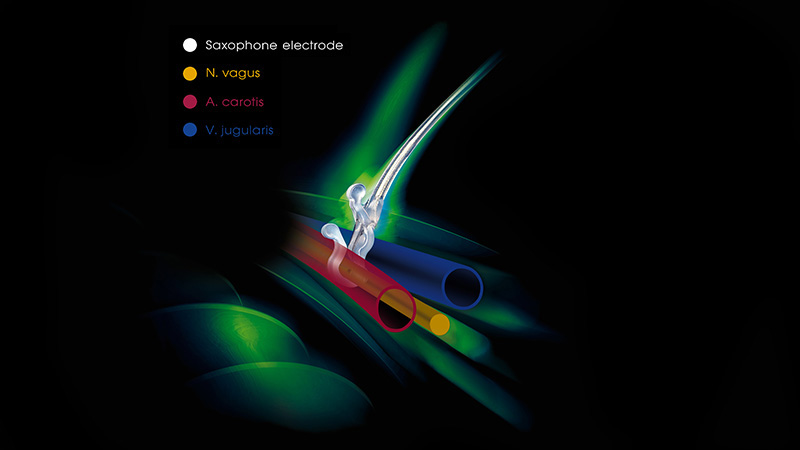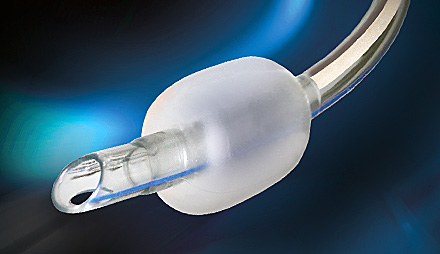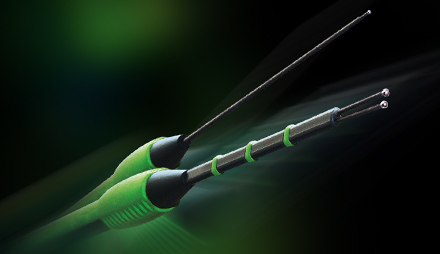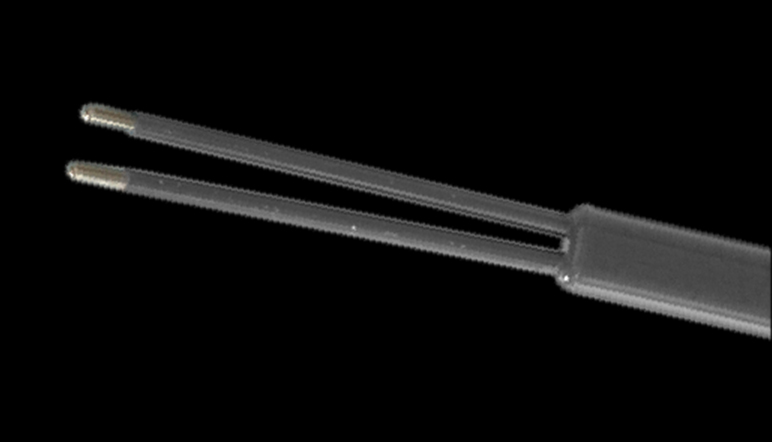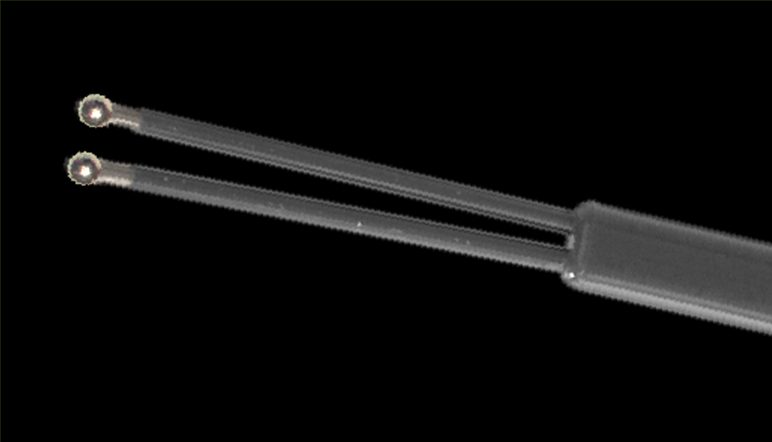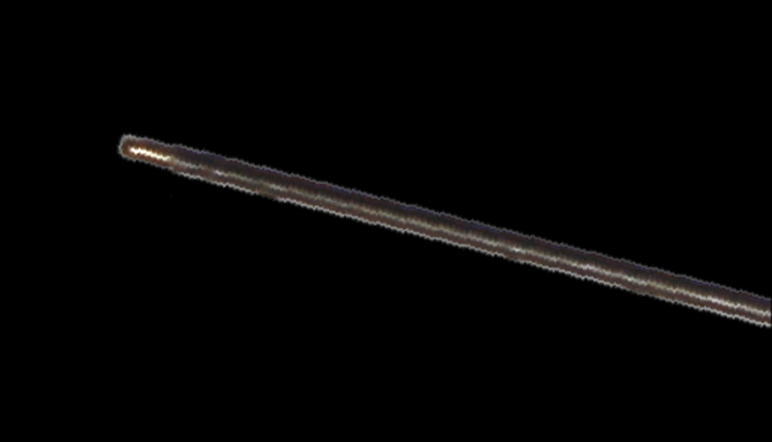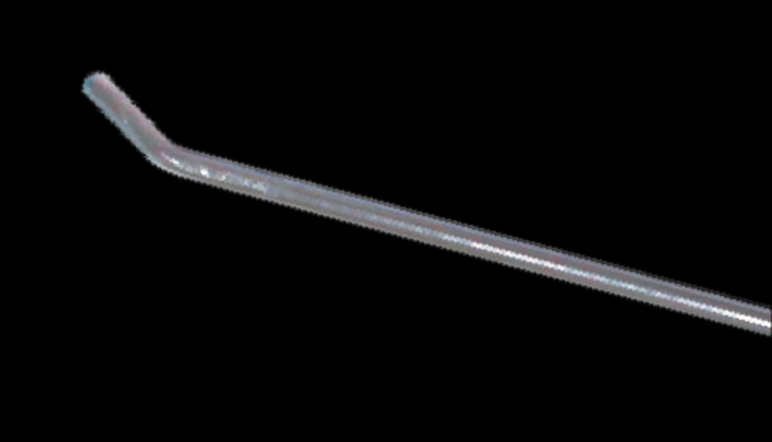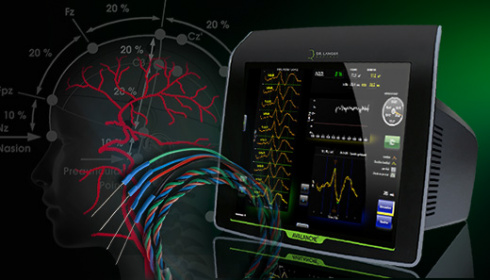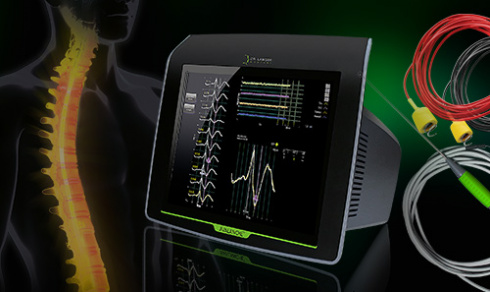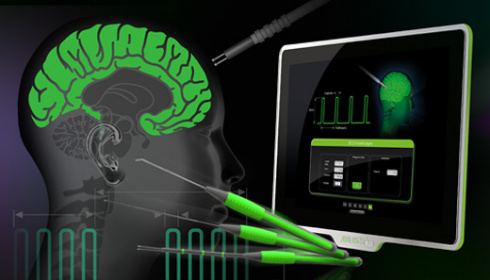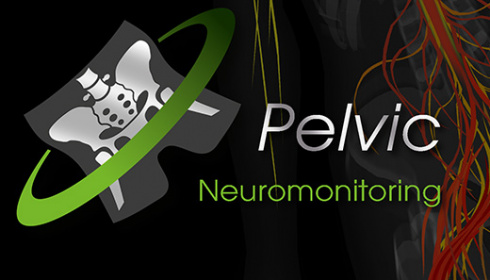the art of neuromonitoring
in thyroid surgerySituation
Neuromonitoring in thyroid surgeryOver 100,000 thyroid surgeries are performed in Germany alone every year. In other words, more than 100,000 vocal cord nerves must be protected from injury.
Pathological changes in a thyroid gland or tissue scarred through multiple surgical interventions may lead to changes in the anatomical position of a nerve, which can pose a challenge to the surgeon, depending on their experience. There is an increased risk of paresis in the vocal cord nerve, the laryngeal recurrent nerve, with sometimes serious repercussions on the patient’s quality of life.
As a consequence, intraoperative neuromonitoring (IONM) has become an indispensable aid in modern thyroid surgery over the last 15 years.
Intraoperative neuromonitoring
FunctionalityIntraoperative neuromonitoring involves the transmission of minute current pulses to the nerve with special stimulation probes. The intact nerve conducts the excitation to the vocalis muscle, where the generated muscle action potential is measured through electromyography and converted into visual or acoustic signals.
The stimulation of the vagus nerve permits to monitor the function of the laryngeal recurrent nerve along its entire length. Only one stimulation is needed before and after thyroid resection.
Continuous neuromonitoring
for ongoing monitoring of the recurrent laryngeal nerveThanks to the permanent stimulation of the vagus nerve, which literally happens in the background, critical signal changes, such as those indicating a strain of the recurrent laryngeal nerve, can be noticed before it is too late. Optionally, surgeons can display the long-term trend lines of the critical measuring parameters amplitude and latency. New situations that arose for the first time during surgery can be analysed post-operatively and compared to other cases on the basis of the saved recorded signals.
Beeps can be pre-programmed and will help the surgical team to respond quickly to critical changes in neural function.
SAXOPHONE ELECTRODE
permanent vagus nerve stimulationOur saxophone electrode provides you with one of the safest systems for the continuous monitoring of the recurrent laryngeal nerve. The new approach that allows the vagus nerve to be continuously stimulated outside the immediate operation site provides additional safety where repetitive surgery is required.
The new saxophone electrode encloses the nerve and its shape is optimally adapted to the anatomical structures. The flexible, open design and the integrated electrodes ensure there is no risk of nerve compression. Yet, the vagus nerve is sufficiently enclosed by the saxophone electrode to ensure reliable stimulation and stable neuronal signals.
ELECTRODE TUBE
Intubation and lead placement in a single stepOur cutting-edge technology saves valuable time because electrodes need not be stuck on individually.
The extra-long, conductive contact surfaces are extremely position-tolerant, and the tube remains flexible at all times. It has never been easier to position an electrode on the vocal cords.
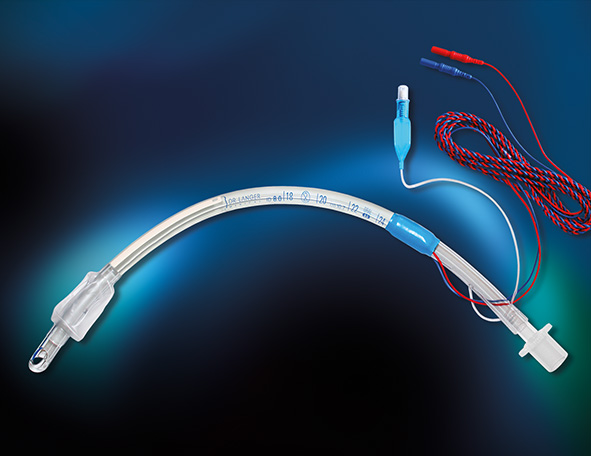
TUBE ELECTRODE
Signal acquisition at the vocalis muscle• extremely thin
• ultra-elastic
• easy to place
• large contact surfaces
Our adhesive tube electrode which has proved its worth over 10 years has been further improved: Numbered application papers, a marker that shows the distance to the cuff, a printed centre line and extra long contact surfaces - sophisticated details that make it easier to use. Our tube electrode can be used on tubes with various diameters - adding adaptability.
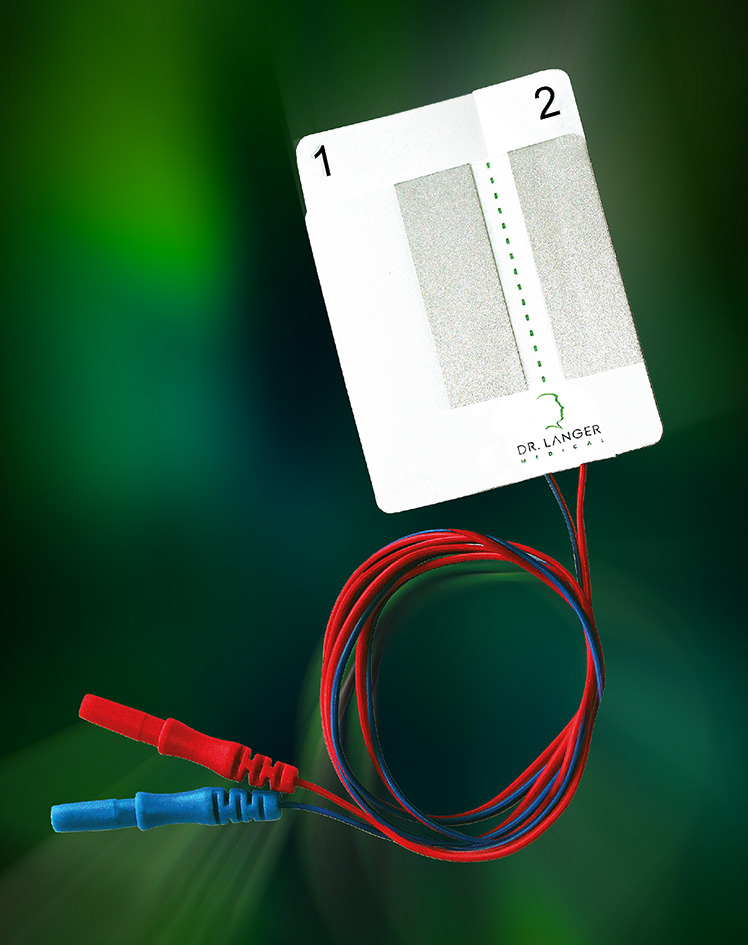
STIMULATION PROBES
Electric stimulation of nerves and neuronal structuresThe choice is yours: Bipolar or monopolar, conventional or minimally invasive, with or without microscope.
Reusable or disposable accessories -
Our range offers a matching solution for virtually all situations.
Our stimulation probes have been made with special attention to ergonomics.
Quality made in Germany by Dr. Langer Medical.

